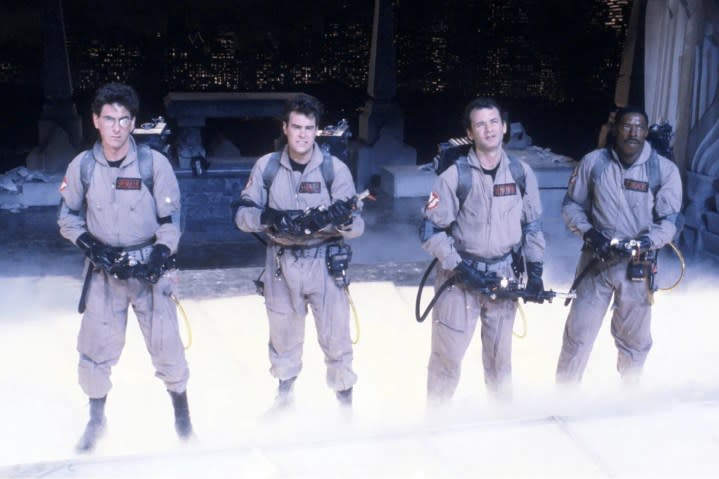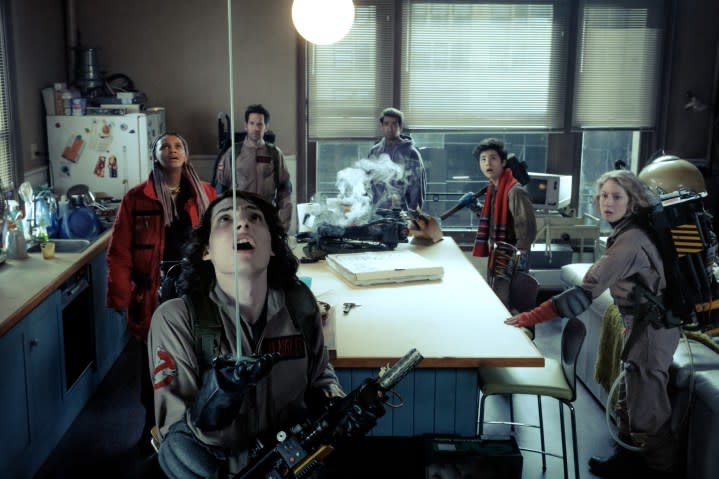What happened to the Ghostbusters franchise?

2024 marks the 40th anniversary of 1984’s Ghostbusters. In the years since that landmark American comedy was released, the franchise that sprouted from it has produced four big-screen sequels, including a Paul Feig-directed reboot starring an all-female lead cast. Compared to so many of the other popular, seemingly never-ending Hollywood franchises that have emerged over the past four decades, that’s not actually that many sequels. The Ghostbusters franchise has, nonetheless, changed a lot over the years.
For a long time, the franchise’s film side lay dormant. Despite repeated attempts to get it off the ground again, it wasn’t until Feig’s 2016 reboot that any big-screen follow-up to 1989’s Ghostbusters II was released. Five years later, the reboot’s timeline was abandoned when Ghostbusters: Afterlife, a quasi-direct sequel to Ghostbusters II, hit theaters. The film, directed by Ghostbusters director Ivan Reitman’s son, Jason, relocated the franchise from New York City to Oklahoma, and that wasn’t the only major change it made.
What made the original Ghostbusters so appealing (and successful)

Released over 30 years after Ghostbusters II and nearly a decade after the 2014 death of original Ghostbusters co-writer and star Harold Ramis, 2021’s Ghostbusters: Afterlife is a legacy sequel in every sense of the phrase. Not only is it a film made in the long shadow of its widely beloved, decades-old predecessors, but it’s also deeply concerned with the lasting legacy of both the original Ghostbusters and the contributions of its creators. It focuses on the descendants of Ramis’ Egon Spengler, and the actor’s real-life death is weaved into the text of the film — so much so that Reitman and company literally bring in a CGI ghost of Ramis to help save the day in Afterlife‘s climax.
The tastefulness of that creative decision is still up for debate. Beyond the lengths it goes to address the legacy of the original Ghostbusters, though, the film also roots itself in the perspective of Egon’s teenage granddaughter, Phoebe (Mckenna Grace). In doing so, Afterlife abandons the adult world of both Ghostbusters and Ghostbusters II in favor of telling a coming-of-age story that, while compelling in parts, only makes the film feel that much more divorced from the franchise’s original, sarcastic sense of humor. 1984’s Ghostbusters is, after all, little more than an extremely goofy comedy about a group of middle-aged men who make a living working suitably bizarre jobs.
The film is elevated by the performances of its exceptional cast and Ivan Reitman’s incredible tonal control, but its narrative ambitions are low, to say the least. The same goes for Ghostbusters II, which is why it’s been truly jarring to see Jason Reitman and Gil Kenan take the franchise in such a different direction over the past three years. Ghostbusters: Afterlife is a family dramedy that, thanks to its sun-burnt Oklahoma aesthetic and grand instances of sci-fi spectacle, looks more like a Steven Spielberg-produced Amblin production than it does anything else. Its sequel, this year’s Ghostbusters: Frozen Empire, feels closer in both tone and spirit to the franchise’s first two films, but there are still coming-of-age, family-oriented aspects that seem to exist in direct opposition to the series’ origins.
It’s time for Ghostbusters to grow up again

The original Ghostbusters is an absurd supernatural sci-fi comedy about a trio of, let’s face it, doofuses who become heroes in spite of their own hang-ups and shared profound lack of self-awareness. There was and still is beauty in both its simplicity and insignificance. Forty years later, the franchise has become a lot bigger and more ambitious, and yet it feels shallower than it used to. By concerning itself so intensely with its own place in pop culture history, the series has taken on a level of narrative weight it was never designed to carry.
Based on most available metrics, it seems like longtime fans don’t mind the franchise’s recent shift in tone, aesthetic, and perspective. When you look at the differences between Ghostbusters and Afterlife and Frozen Empire, though, it’s hard not to squint your eyes at least a little. Is this what time does to all franchises? Or is the modern state of fandom so intense and loud now that no movie or TV show can run a certain length of time without becoming a metatextual commentary on its own supposed greatness?
Ghostbusters: Frozen Empire is now playing in theaters.
